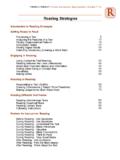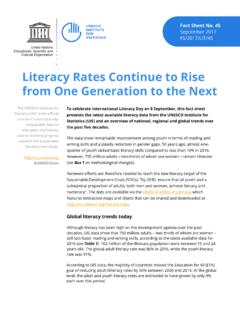Transcription of Library Skills, Information Skills, and Information ...
1 Volume 1, 1998 Approved November 1998. ISSN: 1523-4320 Library skills , Information skills , and Information literacy : implications for teaching and Learning James O. Carey, Assistant Professor, University of South Florida One intent of national-level reports such as the Secretary's Commission on Secondary skills and America 2000 is to foster approaches to the education of our children that go beyond factual Information to conceptual learning; beyond isolated rules to principles for application; and beyond textbook problems with known, predictable solutions to real problems with solutions that are unique to students and their interpretations of their resources and environments. Discussions of higher-order learning are not new. Bloom's taxonomy includes analysis and synthesis skills . Bruner describes problem finding, and Gagn distinguishes problem-solving and cognitive strategies as categories of learned capability, while constructivist thinking includes authentic, situated problem solving.
2 Although abundant theoretical viewpoints exist, guidelines are still developing for designing teaching /learning strategies that ensure higher-order outcomes in Information literacy . This paper will (a) review characteristics of learning outcomes and environments that define higher-order learning in Information literacy , and (b) describe some guidelines from two branches of cognitive psychology for designing Information literacy instruction. The paper closes with an appraisal of research trends and current practice in the teaching of Information literacy . Schools used to have libraries with librarians. The general roles of the librarian were to manage a collection of print materials, promote reading and a love of good literature, and teach children how to find things in the Library . Some librarians also kept track of filmstrips, slides, 16-mm films, audio tapes, records, and the various accompanying projectors and players (although larger schools frequently had a person called an audiovisual specialist who was responsible for maintaining, scheduling, and circulating non-print materials and equipment).
3 teaching children to find Information was limited to the card catalog for the print collection, a guide for periodicals, and standard print reference sources such as dictionaries, atlases, almanacs, thesauri, encyclopedias, and various books of people, quotations, and places. teaching children to find Information in the Library was circumscribed by the forms of Information available, primarily requiring use of card catalogs, indexes, guide words, and alphabetical and numerical sequence to about the third character. Then rapid change began. In approximately a five-year period leading out of the 1970s and into the 1980s, we saw video disc and half inch videocassette appear; audio cassette began to replace records; school libraries, school librarians, and audiovisual specialists were replaced by media Volume 1 | ISSN: 1523-4320. centers and media specialists; and micro computers showed up on desktops.
4 The Information Age was beginning to touch schools, and as formats and sources of Information proliferated, the question in media centers changed from How do I find Information in a limited number of resources? to How do I choose Information that is most appropriate for my needs from a seemingly unlimited number of resources? Clearly, the focus on tool skills that were specific to a particular Information resource shifted to a focus on problem-solving skills generalized across many Information resources. Problem Solving Logical, sequential strategies for problem solving have been taught for years in virtually all disciplines. Although strategies may differ in detail, a common scheme might contain the elements depicted in figure 1. The elegance of such a process is that it has utility for many types of problems. Once a process is learned and applied in one situation, the resulting mental strategy can be generalized and used in any number of situations.
5 For example, one can think through the steps in figure 1 and imagine how they can be applied to these three sample problems: The use of water during the dry season exceeds the rate at which the aquifer is recharged Kids from the junior high school are smoking across the street in front of the elementary school, and The life of children my age in the migrant labor camps of central Florida is unfamiliar to me Figure 1. A Typical Problem-Solving Strategy What is it about this set of three problems that leads us to characterize them as instances requiring problem-solving capability? Though from different subject areas, the three examples have some distinct characteristics in common: 2 School Library Media Research | Volume 1 | ISSN: 1523-4320. Problem-solving tasks are what psychologists call ill-structured (Spiro, Feltovich, Jacobson, and Coulson 1992).
6 That means that there is no single best solution inherent in the problem situation. Consider the case of using dividers and the scale on a map to work out a time-rate-and-distance problem, or using the drawing tools in PowerPoint to create a schematic representation of an electrical circuit. Both of these tasks would take some time, and a student would be using a variety of Information , concepts, and rules to arrive at a correct answer. Both are worthwhile skills that could have many productive applications; but for the purposes of this paper, neither task is an example of problem solving, because both tasks have correct solutions that can be predicted before the task is even begun. Such tasks require a great deal of knowledge (in Bloom's definition of the term [Bloom, Englehart, Furst, Hill, and Krathwohl 1956]) that is organized into very complex mental data structures called schemata (Rumelhart and Ortony 1977).
7 Students need a certain level of knowledge about subject areas in which they are working; and to function in a media center, they may need to know such things as general operating rules and procedures, the names and locations of resources, the function of bookmarks in Netscape, some sources that are good for specific reference tasks, and the position of the printer switch for using the dot matrix printer. Problem-solving tasks are also complex, requiring students to bring many tool skills with them to the task, and perhaps to learn new tool skills in the process of problem solving. Tool skills include a variety of intellectual skills , attitudes, and motor skills . In a media center students need to use computers and software applications, employ Boolean terms to broaden or narrow a search, use a digital camera, paraphrase an article, choose the most appropriate WWW search engine, find something of interest in the vertical file, etc.
8 The tasks require a strategy, a collection of tactics that can be grouped and used in developing a solution. It may require brainstorming, developing a rating scale for comparing alternative solutions, holding a debate, rooting out primary sources of Information and evaluating their authority, formatting a Gantt chart, testing a hypothesis, etc. Finally, problem-solving tasks require that nowledge, tool skills , and solution strategies be orchestrated into an effective process, recognizing that problems are dynamic, changing as we ork on them and learn more about them. To solve problems effectively we must constantly check and re-check assumptions, apply different sets of knowledge and tool skills , change or modify our solution strategies, and mentally monitor the problem-solving process to make adjustments and keep it on track as we progress toward a solution.
9 This is variously referred to as using cognitive strategies (Gagn , 1985) and metacognition (Brown, Campione, and Day 1981) or just plain learning how to learn.. Two additional properties of problem-solving activity run throughout the literature on school restructuring and future schools. We read constantly that schools should be teaching children to think rather than memorize and repeat, and that thinking skills should transfer to the real world so that our children become independent, productive members of adult society. Problem solving as described above is the essence of thinking skill, and if schools can provide the appropriate variety and frequency of problem-solving engagement, then transfer (in keeping with individual student's capabilities) will be assured. Figure 2 is a graphical representation of the foregoing description of problem solving.
10 3 School Library Media Research | Volume 1 | ISSN: 1523-4320. Figure 2. Problem Solving and Life skills Information Problem Solving Models Many disciplines develop specific problem-solving strategies so that practitioners need not infer from a generalized model to a context of particular interest. This is the case regarding Information problem solving. A body of literature on Information problem solving in school settings began to gather momentum in the 1980s with definitional discussions. The literature expanded into model building, and now, in the 1990s, has moved into qualitative (and some quantitative) investigations of the efficacy of models; strategies for optimizing applications of models; interactions among selected aspects of models, curriculum content, Information resources, students, media specialists, and teachers, and; the application of appropriate theories from communications, Information science, and cognitive psychology.

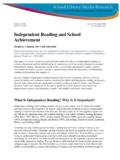
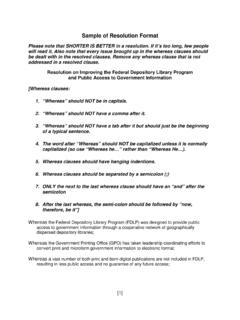
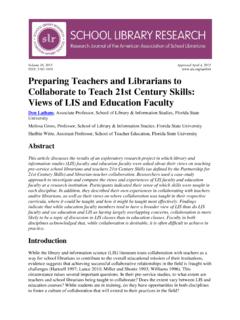


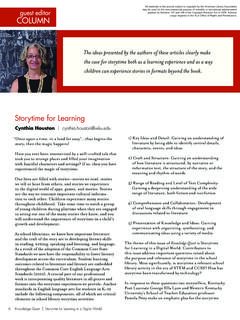

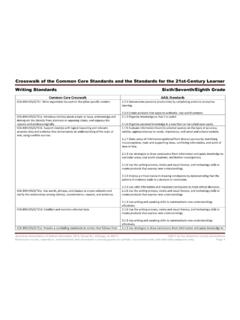
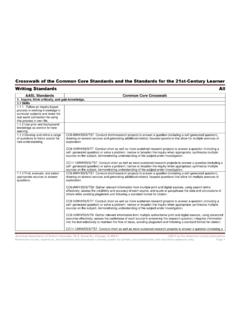
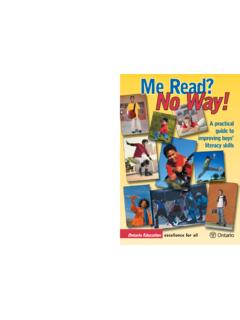

![The Ontario Curriculum, Grades 1-8, Language [revised] 2006](/cache/preview/d/5/3/5/d/c/7/4/thumb-d535dc7439a04910d8a17bf7f1d6b83f.jpg)
